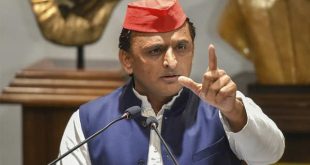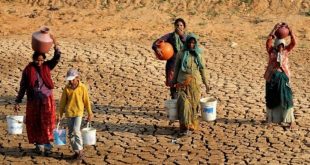 General Elections 2024:
General Elections 2024:
The political landscape in India is gearing up for a seismic shift as the 2024 General Elections approach. With political parties across the spectrum preparing for battle, the nation awaits eagerly to witness whether the National Democratic Alliance (NDA) under the leadership of the Bharatiya Janata Party (BJP) can once again ascend to power at the center. This election holds particular significance for several reasons. If the NDA manages to secure a victory, it will mark the first time in history that any coalition or party holds the reins of Delhi for a third consecutive term. Conversely, if this doesn’t come to pass, it would signal that the electorate has chosen change. In the midst of all this, we shall delve into BJP’s preparedness and the challenges they face.
States Governed by NDA/India Alliance
Let’s begin by examining which states are currently under the governance of NDA or India Alliance parties. As of now, the NDA rules in Uttar Pradesh, Madhya Pradesh, Gujarat, Maharashtra, Haryana, Goa, Puducherry, Assam, Manipur, Arunachal Pradesh, Nagaland, and Sikkim. Turning our attention to the Congress or India Alliance, they hold power in West Bengal, Karnataka, Bihar, Rajasthan, Chhattisgarh, Punjab, Delhi, Kerala, Jharkhand, and Tamil Nadu.
The NDA’s Current Composition
As of the present day, the NDA comprises 37 parties, while the India Alliance includes 28 parties.
NDA’s Composition:
- Bharatiya Janata Party (BJP): 303
- Shiv Sena (Shivsena): 11
- Lok Janshakti Party (LJP): 6
- All India Dravida Munnetra Kazhagam (AIADMK): 5
- Apna Dal (AD): 2
- AJSU Party: 1
- Nationalist Democratic Progressive Party (NDPP): 1
- Mizo National Front (MNF): 1
- All Bodo Students’ Union (ABSU): 1
- Sikkim Krantikari Morcha (SKM): 1
Congress or India Alliance’s Composition:
- Indian National Congress (INC): 52
- Dravida Munnetra Kazhagam (DMK): 23
- Trinamool Congress (TMC): 22
- Janata Dal (United) [JDU]: 16
- Shiv Sena (Uddhav): 6
- Samajwadi Party: 5
- Nationalist Congress Party (NCP) – Sharad Pawar: 4
- Makkal Needhi Maiam (MNM): 3
2019: NDA vs. UPA
In the 2019 elections, the BJP secured a resounding victory with 303 seats and a vote share of 37.47%. In total, the NDA won 353 seats with a vote share of 45%. In contrast, the Congress managed to secure 52 seats with a vote share of 19.51%. The UPA, on the other hand, secured 92 seats with a vote share of 26%, with the rest of the seats going to various other parties.
Coalition Dynamics in Focus
When the United Progressive Alliance (UPA) presented itself as a new avatar, India as a whole, the BJP intensified its efforts to strengthen its coalition. The recent alliance with the Janata Dal Secular (JDS) in Karnataka is a prime example. In Maharashtra, when Shiv Sena parted ways with the NDA, its component Shinde is still aligned with the BJP. Furthermore, the NCP’s Ajit Pawar faction, which could have posed a challenge to the BJP, has chosen to align with them. In Bihar, the Chirag Paswan faction of the Hindustani Awam Morcha (HAM) led by Upendra Kushwaha is on board with the BJP. In Uttar Pradesh, Om Prakash Rajbhar, who wields influence in the social sphere, has shared the stage with the BJP.
Strategies, the Trump Card
The 2024 General Elections are witnessing a keen focus on the Women Reservation Bill, with the opposition seeing it as both an opportunity for the BJP and a potential pitfall. While the opposition leaders may have reservations about this move, political analysts believe that the BJP may not refuse the benefits this initiative could bring. Alongside this, various government schemes like the Pradhan Mantri Jan Dhan Yojana, Ujjwala Yojana, Pradhan Mantri Fasal Bima Yojana, Pradhan Mantri Krishi Sinchayee Yojana, Ayushman Bharat Yojana, Mudra Loan, and Rehdi-Patri Yojana are being likened to a trump card in the election game.
In conclusion, the 2024 General Elections in India are poised to be a defining moment in the country’s political history. The battle lines are drawn, and the outcome remains uncertain. The nation eagerly awaits to see whether the BJP, under the leadership of Narendra Modi, can secure another term in office, or if a new political era is on the horizon. One thing is certain; the election will have far-reaching implications for the future of India’s governance.
 Suspense Crime Sach Ka Dam
Suspense Crime Sach Ka Dam


